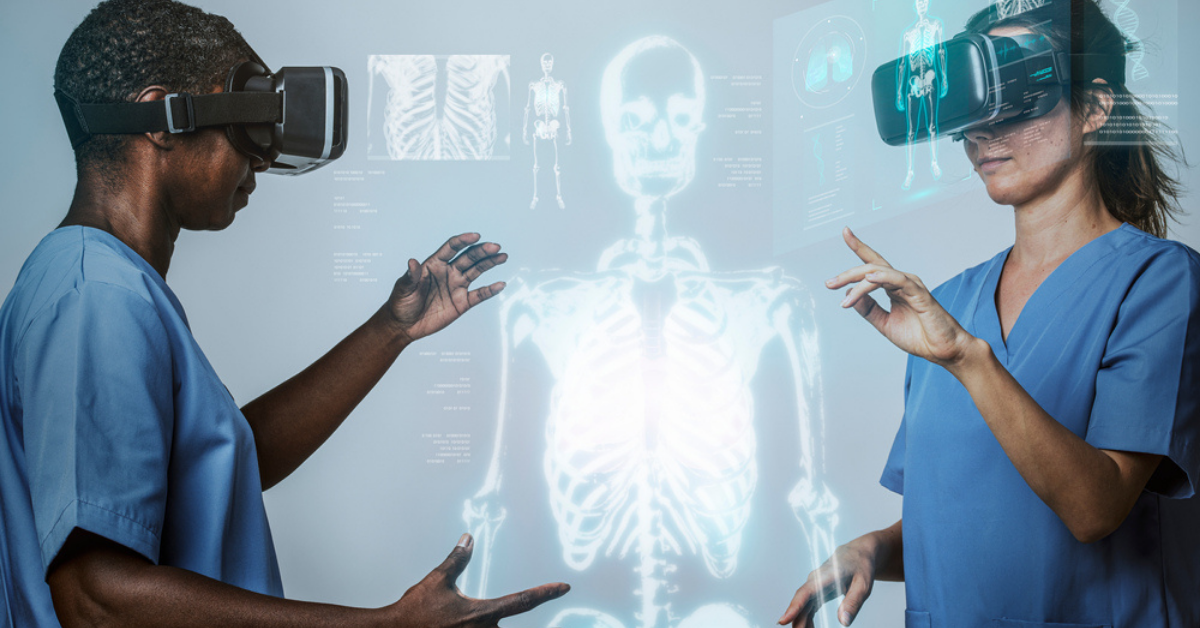This article explores the use of virtual and augmented reality in education, including the benefits and challenges of these technologies, as well as examples of how they are being used in classrooms and educational settings.
Technology has revolutionized education in recent years, transforming the way we teach and learn. One of the most exciting developments in this field is the use of virtual and augmented reality (VR and AR) in education.
These technologies have the potential to enhance student engagement, improve learning outcomes, and provide new opportunities for exploration and discovery. In this article, we will explore the use of VR and AR in education, including the benefits and challenges of these technologies, as well as examples of how they are being used in classrooms and educational settings.
What are Virtual and Augmented Reality?

Virtual reality (VR) is a computer-generated simulation of a 3D environment that can be explored and interacted with by a person wearing a VR headset. In contrast, augmented reality (AR) overlays digital information in the real world using a smartphone, tablet, or AR headset. Both technologies have the potential to create immersive and interactive learning experiences that can enhance student engagement and understanding.
Benefits of VR and AR in Education:
There are many potential benefits of using VR and AR in education, including:
- Increased engagement: VR and AR can create a sense of presence and immersion that can help students become more engaged with their learning.
- Improved learning outcomes: Studies have shown that using VR and AR can lead to better learning outcomes, including increased retention of information and improved critical thinking skills.
- Enhanced creativity: VR and AR can provide students with new tools for exploring and creating in ways that are not possible in the real world.
- Safe and controlled environments: VR and AR can provide students with safe and controlled environments for practicing skills that would be dangerous or impractical to do in the real world.
Challenges of VR and AR in Education:
While there are many potential benefits of using VR and AR in education, there are also some challenges that need to be considered, including:
- Cost: Virtual reality (VR) and AR hardware and software can be expensive, making it difficult for some schools and students to access these technologies.
- Technical difficulties: Virtual And Augmented Reality require specialized hardware and software, which can be difficult to set up and maintain.
- Safety concerns: Virtual And Augmented Reality can create a sense of disorientation or motion sickness in some users, which can be a safety concern.
- Limited content: While there is an increasing amount of educational content available for VR and AR, there is still a limited amount of high-quality content available.
Examples of VR and AR in Education:
There are many exciting examples of how Virtual And Augmented Reality are being used in education, including:
- Virtual field trips: VR can provide students with immersive experiences of places they might not otherwise be able to visit, such as museums, historical sites, or even other countries.
- Simulations: Virtual And Augmented Reality can provide students with safe and controlled environments for practicing skills such as surgery, piloting, or engineering.
- Interactive storytelling: VR and AR can provide students with new ways of experiencing stories and narratives, allowing them to explore and interact with the world of the story in a more immersive way.
- Science education: Virtual And Augmented Reality can provide students with new ways of exploring and understanding scientific concepts, such as exploring the human body or the structure of molecules.
Conclusion:
Virtual and augmented reality has the potential to transform education by providing students with new tools for exploration and discovery. While there are some challenges to using these technologies, the benefits are clear, and as the technology continues to improve, we can expect to see even more exciting applications in the future. As educators, it is important
that we stay informed about these developments and explore ways to integrate VR and AR into our classrooms and educational settings. By doing so, we can provide our students with new and exciting learning experiences that can help them become more engaged, creative, and knowledgeable individuals.
As we move forward, it will be important to address the challenges associated with VR and AR and find ways to make these technologies more accessible to all students.
This may involve working with technology companies to develop more affordable hardware and software, as well as providing training and support for teachers who want to incorporate VR and AR into their curriculums.
Ultimately, the use of VR and AR in education has the potential to revolutionize the way we teach and learn, providing students with new opportunities for exploration and discovery that were previously unimaginable.
By embracing these technologies and working together to address the challenges they present, we can create a more engaging, dynamic, and effective educational system that prepares students for success in the 21st century.